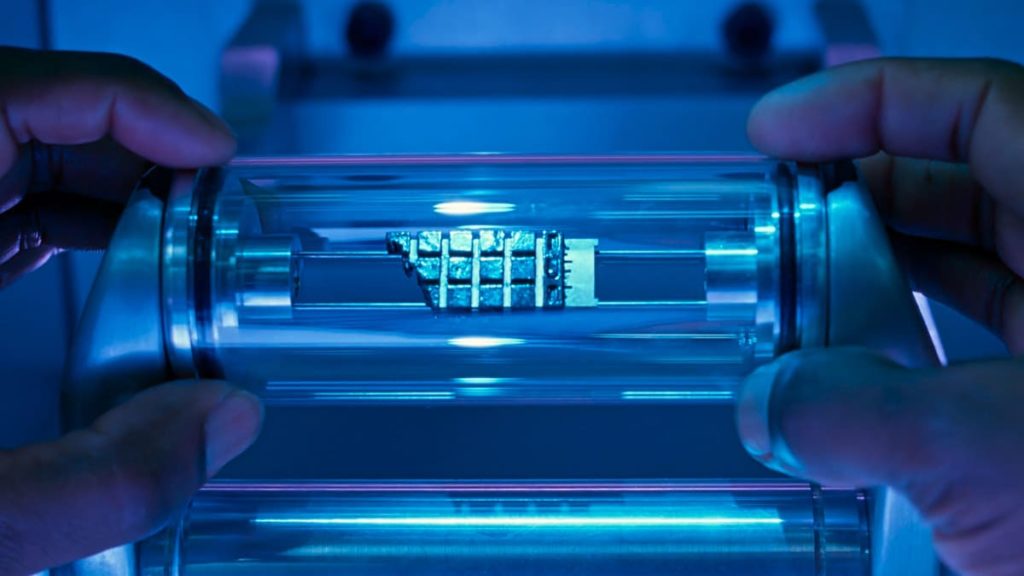
If you find yourself getting gunned down by a Terminator with a neural net processah (a learning computah) in the future, one thing that you might be able to partially blame is delicious honey. Researchers with Washington State University have discovered that the sweet substance holds the potential for creating neuromorphic chips, processors that are designed to work and process information like the human brain, mimicking neurons and synapses. Engineers learned that honey in solidified form can be used to develop effective memristors, a key component that, unlike a transistor, can not only process but also store data in memory. Efficiency and processing speed are just two benefits of a neuromorphic computing system.
“This is a very small device with a simple structure, but it has very similar functionalities to a human neuron,” said Feng Zhao, associate professor of WSU’s School of Engineering and Computer Science and corresponding author on the study.”This means if we can integrate millions or billions of these honey memristors together, then they can be made into a neuromorphic system that functions much like a human brain.”
Honey holds potential for making brain-like computer chips (WSU)
Hailed by some as the future of computing, neuromorphic systems are much faster and use much less power than traditional computers. Washington State University engineers have demonstrated one way to make them more organic too. In a study published in Journal of Physics D, the researchers show that honey can be used to make a memristor, a component similar to a transistor that can not only process but also store data in memory.
For the study, Zhao and first author Brandon Sueoka, a WSU graduate student in Zhao’s lab, created memristors by processing honey into a solid form and sandwiching it between two metal electrodes, making a structure similar to a human synapse. They then tested the honey memristors’ ability to mimic the work of synapses with high switching on and off speeds of 100 and 500 nanoseconds respectively. The memristors also emulated the synapse functions known as spike-timing dependent plasticity and spike-rate dependent plasticity, which are responsible for learning processes in human brains and retaining new information in neurons.
The WSU engineers created the honey memristors on a micro-scale, so they are about the size of a human hair. The research team led by Zhao plans to develop them on a nanoscale, about 1/1000 of a human hair, and bundle many millions or even billions together to make a full neuromorphic computing system.
